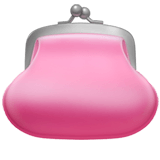Ever invested in high-quality milk fiber bedding? If so, you know how luxurious and cozy it feels. But to keep your bedding in tip-top shape for years to come, it requires some TLC.You’ve spent good money on bedding made of natural, breathable fibers, so you want to make sure you’re doing everything right to maximize its longevity. The good news is, with a few simple care tips, your milk fiber bedding can last through many sweet dreams. In this article, we’ll walk you through the do’s and don’ts to keep your bedding fresh, clean, and as comfy as the day you bought it. Follow these tips and you’ll be drifting off to sleep on cloud nine for a long time.
How to Wash Milk Fiber Bedding
To keep your milk fiber bedding in tip-top shape and extend its lifespan, proper care and washing are key.
Wash Separately the First Time
The first wash is the most important. Wash your new milk fiber bedding separately the first time. Use a gentle, eco-friendly detergent free from bleaches, dyes and fragrances which can damage the fibers. A detergent specifically for delicates is ideal. Wash the items on the gentle cycle using cold or warm water.
Avoid Fabric Softener
Skip the fabric softener which can coat the fibers and reduce the breathability and temperature regulation of the bedding. Milk fiber is naturally soft and does not require softener.
Tumble Dry Low or Air Fluff
After washing, tumble dry the bedding on low heat while avoiding over-drying. Low heat will maintain the shape and prevent damage. Alternatively, you can air fluff the bedding which is more energy efficient. Avoid twisting or wringing out the excess water from the bedding which can cause damage. Gently squeeze and lay the item flat to air dry.
Wash Every 7-14 Days
For the best care of your bedding, wash the sheets, pillowcases, blankets, etc. every 7 to 14 days depending on use and soiling. Fresher bedding will keep you more comfortable and help avoid buildup of allergens.
Avoid Ironing
Milk fiber bedding does not require ironing. Ironing can potentially cause damage to the fiber and decrease breathability. Simply wash and dry the bedding as directed and avoid ironing.
By following these care tips, your milk fiber bedding will remain fresh, soft and durable for years to come. Sweet dreams!
Stain Removal Tips for Milk Fiber
Milk fiber bedding is naturally resistant to stains, but accidents still happen. Here are some tips for removing common stains from your milk fiber sheets and duvet covers:
Food and Beverage Stains
For stains like coffee, tea, wine or chocolate, blot with a clean damp cloth as soon as possible. Then treat the stain by making a paste from water and baking soda or water and white vinegar. Apply the paste directly to the stain and let it sit for at least 30 minutes. Rinse with cold water and launder as usual. For stubborn stains, you may need to repeat this process.
Blood Stains
Blot blood stains immediately with a clean, wet cloth. Apply a mixture of one part hydrogen peroxide and one part cold water directly to the stain. Let it bubble for 5 minutes. Rinse with cold water and launder using a bleach alternative, like sodium percarbonate. For dried stains, pretreat the stain before washing and be patient – it can take a few washes to fully remove a set-in blood stain.
Sweat and Body Fluid Stains
Pretreat sweat stains and other protein stains by making a solution of detergent and water. Apply it directly to the stains and let it soak in for at least 30 minutes or up to overnight before washing as usual. For yellowed stains from sweat or urine, try using a commercial urine remover product before washing. White vinegar can also help brighten and deodorize these stains.
By treating stains promptly and properly pre-treating when needed, you can keep your milk fiber bedding looking fresh and bright. Be consistent and patient, as complete stain removal may require repeated washings. Sweet dreams!
Extending the Life of Your Milk Fiber Bedding
To get the most out of your investment in milk fiber bedding, you’ll want to properly care for it so it lasts as long as possible. By following a few best practices, you can extend the lifespan of your bedding by years.
Wash on a gentle cycle using cold or warm water
The agitation and high heat of a standard wash cycle can damage the fibers in milk fiber bedding. Stick to a gentle cycle using cold or warm water to prevent pilling and keep the bedding soft. Avoid fabric softener which can coat the fibers and reduce their temperature regulating abilities.
Use a mild detergent free from bleach and dyes
Harsh detergents, bleach and dyes can strip the natural oils in milk fibers and cause damage. A mild detergent free from these additives is best. An eco-friendly, plant-based detergent is a great choice.
Remove bedding from the dryer promptly
While milk fiber bedding can go in the dryer on low heat, leaving it sitting in there after the cycle ends can cause damage from over-drying. Remove the bedding as soon as the cycle finishes and either lay flat or tumble dry on air fluff to restore loft.
Avoid ironing when possible
Too much heat and pressure from ironing can damage milk fibers. Only iron your bedding on a low setting if needed. It’s best to remove bedding from the dryer promptly to avoid wrinkles that would require ironing.
Use a mattress protector
A fitted mattress protector will help keep your milk fiber bedding clean by creating a barrier between it and the mattress. This is especially important if you have a memory foam or latex mattress which can retain more heat and body oils. A protector means you’ll have to wash the bedding itself less frequently.
Consider professional cleaning periodically
For the best care, consider having your milk fiber bedding professionally cleaned once every 6-12 months. A professional cleaning using a non-toxic, eco-friendly process will thoroughly clean and revitalize the fibers, restoring the bedding to like-new condition so it continues regulating temperature and lasting for years to come.
Following these best practices for caring for your milk fiber bedding will help ensure many restful nights of comfort to come. Treat it well and it will treat you well in return.
Conclusion
So that’s the scoop on keeping your milk fiber bedding in tip-top shape for the long haul. Follow these easy care tips and your bedding will last for years to come, all while keeping you cozy and comfortable each night. At the end of the day, caring for the things that care for you is worth the minimal effort. Your bedding has your back (literally!), so do it a solid and have its back too. Keeping good care of the little details in life is how we show our gratitude for the big things. So go forth and care for your bedding well—you’ll sleep better at night knowing you did. Sweet dreams!

 Dresses
Dresses Lingerie & Sleep
Lingerie & Sleep Shirts & Sweaters
Shirts & Sweaters Coats & Jackets
Coats & Jackets Shoes
Shoes Bedding Sets
Bedding Sets Wigs
Wigs Jewelry
Jewelry Handbags
Handbags Fabrics
Fabrics Gifts Ideas
Gifts Ideas



